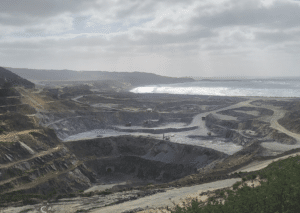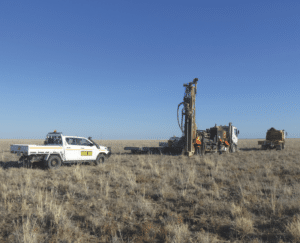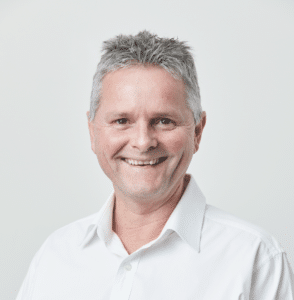Australian Mining spotlights three Australian-based companies with bright critical minerals futures.
Some critical minerals garner more attention than others; some have glossier and more intelligible end uses than their lesser-known cousins.
But that’s not to say the antimonies, fluorines, niobiums and molybdenums of the world aren’t important, with equally critical purposes for global advancement and renewable energy development. The same goes for tungsten, vanadium and rare earths, each of which has an exciting future in Australia and abroad.
While Australia’s rare earths industry has attracted plenty of international attention of late, with the US and Canada two of the key backers, the local industry remains in its infancy.
There are also Australian-based companies looking to cut their teeth in international rare earths jurisdictions.
Australian Mining spotlights three local companies that are on the hunt for or producing lesser known but equally important critical minerals.
Axel REE
Brazil is becoming a globally significant rare earths jurisdiction, with emerging projects defined by low-cost mining and processing methods.
Axel REE and its suite of Brazilian rare earths assets is a key player in the area. Axel’s Caladão project in the state of Minas Gerais was the first rare earths discovery in Brazil’s ‘Lithium Valley’, which boasts the country’s largest lithium reserves.
“Axel REE founder Pat Volpe has been operating in Brazil for 14 years and has built a team of tenement managers, geologists, geophysicists and drillers,” Axel REE executive chair Paul Dickson told Australian Mining.
“A lot of the leg work was done during that period, including the completion of 48 drill holes across 25km at Caladão. The project now spans around 400 square kilometres, which is huge.”
Recent drilling has been focused on Area A and Area B within Caladão. Auger drilling conducted in August 2023 at Area A intercepted grades as high as 2m at 7612 parts per million (ppm) total rare earth oxide (TREO).
Area B has also delivered high-grade assays, including 10m at 2872ppm TREO with 35 per cent magnetic rare earth oxide (MREO), and 6m at 2449ppm TREO also with 35 per cent MREO.
MREO includes the high-value and in-demand inputs for the permanent magnets used in electric vehicles and wind turbines. Neodymium-praseodymium (NdPr) are two well-known MREOs.
At the time of writing, Axel REE was preparing its initial public offering with a hope to raise $15 million. Once the company lists on the ASX, it will be drilling at Caladão to delineate a JORC resource.
“This will be a combination of auger drilling to test Caladão’s scale potential and reverse circulation drilling to explore deeper into the deposit and generate data to develop the JORC resource,” Dickson said. “Importantly, the project is open in all directions along strike, laterally and at depth. Drilling has demonstrated Caladão’s depth potential, with grades strengthening as drill holes have gone deeper. We will be looking to further validate this.”
Once sufficient drilling samples have been generated at Caladão, Axel will commence metallurgical test work at the project.
Axel REE is also represented by its Caldas project in Minas Gerais, located adjacent to Meteoric Resources’ ionic adsorption clay Caldeira project, its Itiquira project in the state of Mato Grosso, and its Corrente project in the state of Piauí.
The company will be advancing all four projects in parallel. Given each project’s discovery potential and unique geological characteristics, Axel REE believes each of the assets could be company-making in their own right.
Group 6 Metals
Operating its Dolphin mine in King Island, Tasmania, Group 6 Metals is one of only a few tungsten miners to come online outside of China in recent years.
Tungsten prices have remained robust in 2024 due to changing Chinese supply dynamics and increased activity from Chinese buyers in Western markets. In early June, the ammonium paratungstate (APT) CIF Rotterdam price was $US335–360 per metric tonne unit – a 12 per cent increase on the six weeks prior.

Image: Group 6 Metals
Buoyant pricing is enabling emerging operations such as Dolphin to navigate the teething issues that come with their ramp-up and be optimistic for the future, where margins are expected to be higher at nameplate production levels.
After experiencing some challenges during its first 12 months of operations, Group 6 has commenced mining at Dolphin’s high-grade C lens.
“The C lens is high-grade and it’s consistent – you don’t get a lot of variability in it,” Group 6 managing director and chief executive officer Keith McKnight told Australian Mining. “We’re mining that now, and we’re supplying the process plant with 0.75 to 0.8 per cent tungsten trioxide from the mine. To put that into context, that’s at least three to four times higher than any other mine in the Western world outside of China.”
In parallel with mining higher-grade ore, Group 6 is working on reducing operational expenditure at Dolphin and making some adjustments to its processing plant.
“We’ve undertaken a comprehensive review of the processing plant in consultation with OEMs (original equipment manufacturers),” McKnight said. “This is to ensure individual equipment components are working optimally.
“We’ve identified some areas of improvement. Once we complete that work, along with feeding higher ore grades, we should see a significant step change in production, and that should see the operation become cashflow-positive.”
A corrosion- and acid-resistant commodity with the highest melting point of all metals, tungsten is most commonly used in hardening steel. It can be found in engine valves, LCD panels, light bulbs, laser printers, electrical switch gear and even golf clubs.
Richmond Vanadium
Battery energy storage systems (BESS) will be critical as Australia looks to replace its current system fuelled by coal and natural gas with more energy-efficient means.
Long-duration BESS capability is underpinned by vanadium redox flow batteries (VRFBs), which are powered by vanadium electrolyte derived from vanadium ore.

Image: Richmond Vanadium
VRFBs are preferred to lithium-ion batteries for grid-scale energy because they are non-flammable, provide immediate-release power supply and can be recycled indefinitely. VRFBs are proving a vital option as the energy grid is decarbonised.
While Australia is yet to produce any vanadium, there are several companies eager to change this and create a new industry.
This includes Richmond Vanadium, which is holder of the world’s largest undeveloped vanadium resource at its Richmond–Julia Creek project in Queensland.
Following a positive pre-feasibility study, Richmond Vanadium is currently advancing its bankable feasibility study (BFS) towards completion in the middle of 2025. The BFS will demonstrate the viability of Richmond Vanadium’s mine-to-battery strategy.

managing director Jon Price.
Image: Richmond Vanadium
“We’re focused on creating a vanadium industry in Australia, so a complete supply chain from mined material all the way to battery manufacturing in Queensland,” Richmond Vanadium managing director Jon Price told Australian Mining. “We’re spending a lot of time on battery deployment and educating people that vanadium redox flow batteries are far superior to any other battery for grid-scale stationary technology.”
So how will Richmond Vanadium achieve this particular goal?
By completing geological, mineralogical and metallurgical testwork across four laboratories in China and Australia, the company is beginning to find out.
“There’s two parts of the processing pathway for vanadium,” Price said.
“One involves a simple concentrator; because our orebody is so big and unique in its geology, we can generate 1.8 to two per cent concentrate through simple screening and flotation.
“Then we go into downstream processing, which involves an acid-leaching plant and solvent extraction and delivers a 99 per cent vanadium pentoxide product.
“There is also possibility that we can take our concentrate to vanadium electrolyte without having to go through the powder or flake stage. That’s what we’re testing right now.”
“If that works, that changes the flowsheet a bit, but it also lowers the capital and operational costs considerably.”
Pending approvals and a positive environmental impact statement, Richmond Vanadium hopes to be in construction by the end of 2025 and producing in 2027.
This feature appeared in the August 2024 issue of Australian Mining.



